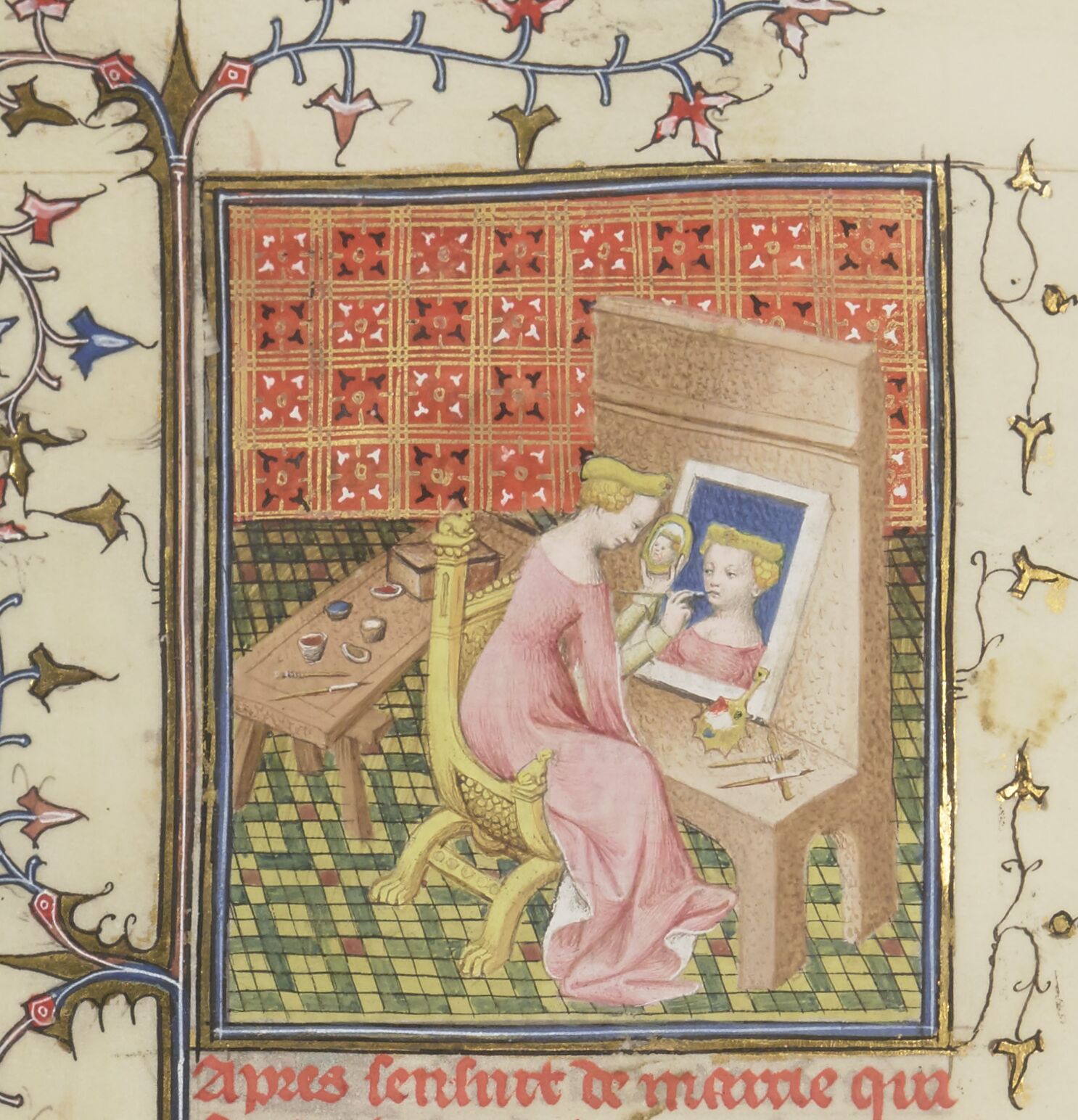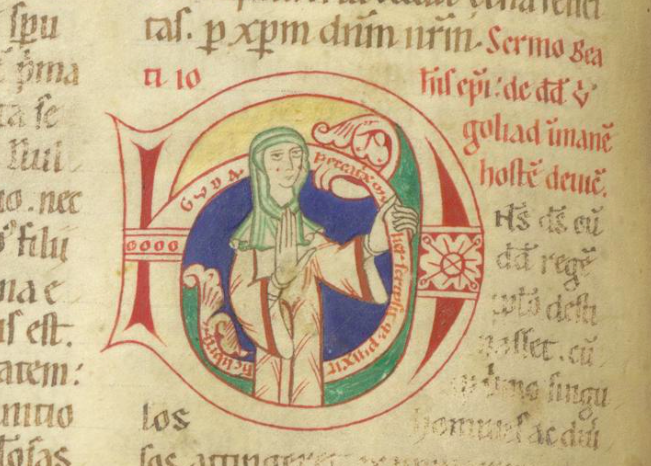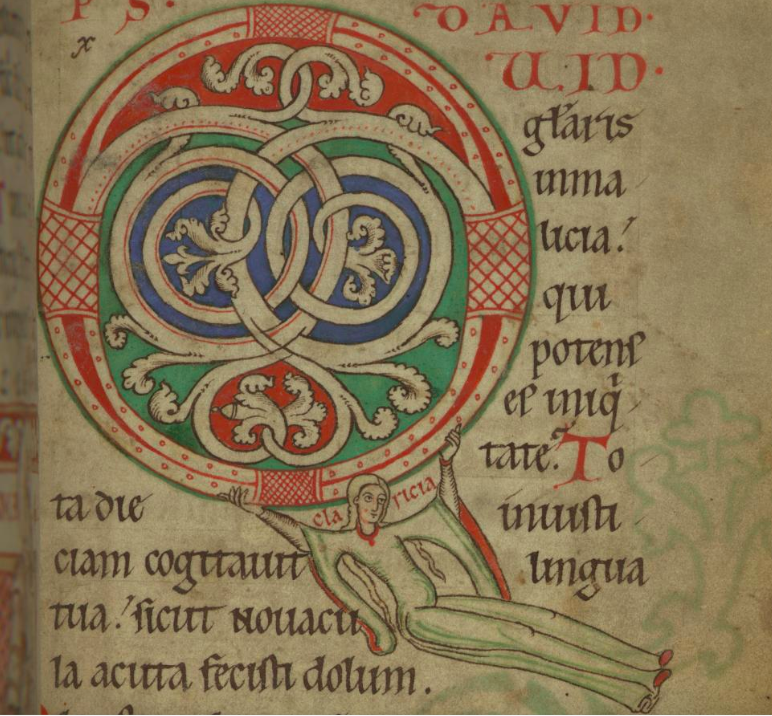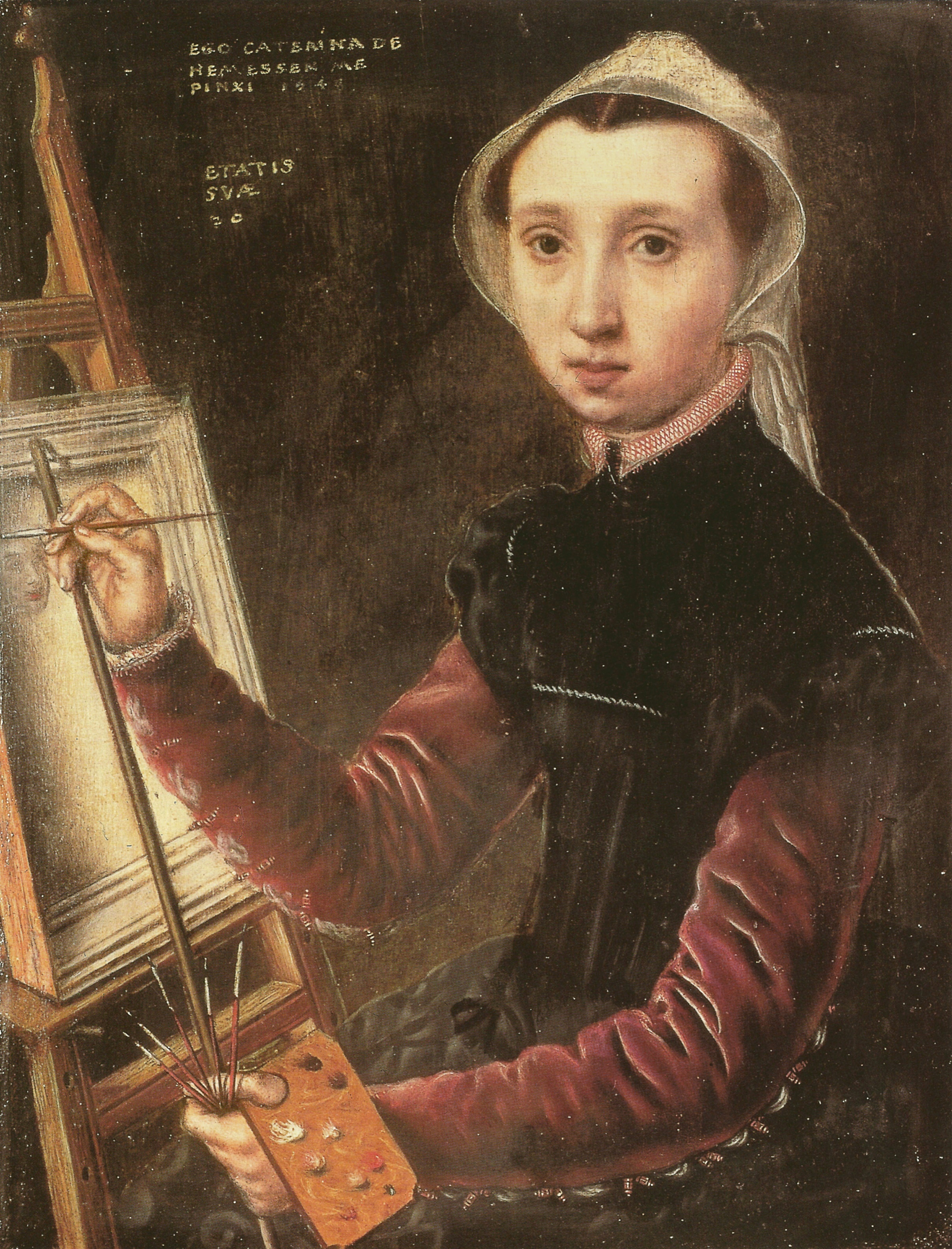
Medieval female self-portraits

I have a feeling that lately a fashionable topic became (lack of) women among Old Masters of art. It is undoubtedly true that the most famous Old Masters are male, and that in past centuries women had much more limited options when it comes to making any career. It is very good and very important that historical female artistic activities are now being re-dicovered and reminded. This may be due to recent popularity of a book „The Story of Art without Men” (by Katy Hessel, 2022), referred to e.g. by Eliza Goodpasture in her text published in the ArtReview („The Problem with the ‘Look, I Found Her!’ Trend in Art History”). Unfortunately, all those analysis start at the Renaissance – as if no female artist existed prior to the 15th century.
Of course it is true that in medieval and Early Modern times women met all sorts of obstacles when they tried to have some professional life, artistic or otherwise. Guilts were of course dominated by men, but in fact women also worked: in workshops, in stores, in all kinds of “family enterprises”. Paintresses were educated, and later worked by the sides of their fathers, brothers or husbands. Unfortunately, a huge part of past centuries’ artistic production remains anonymous, and we can’t figure out whether any of those art-pieces were made by a woman. For example, sons of Pieter Brueghel the Elder, Pieter the Younger and Jan, were first educated by their grandmother, an artist Mayken Verhulst, but we can’t attribute her any surviving works.
We have sources that prove that women worked as scribes and illuminators. Hildegard of Bingen (1098-1179) wrote books on medicine, natural history and healing; she also composed music and painted miniatures. Also lay women worked as illuminators; I once wrote about Paris workshop of married couple Richard and Jeanne de Montbaston (in a post on a phallic tree, available HERE). After her husband died in 1353, Jeanne kept running their workshop by herself; it is likely that she was the author of quite indecent decorations of “Roman de la Rose” manuscript (Bibliothèque Nationale de France, MS. Fr. 25526).
Meanwhile, from Christine de Pisan we may learn that certain illuminator Anastasia worked in Paris ca. 1400; she specialised in marginal decoration, being especially good at painting flowers and ornamental details.
Sometimes I come across a statement that self-portrait of Catharina van Hemessen (1528-after 1565), survived in several copies (in Basel, in Petersburg and in Cape Town) is the eldest survived female self-portrait. That is not true; if we want to consider this painting “the eldest example of something”, it could only be composition. Self-portraits while painting gained popularity starting from 1550s, and this self-portrait dates back to 1548.
Painting self-portraits is natural for painters; there is actually a theory that as young artists often practice depicting themselves, later they tend to give their own features to most of characters they depict. A well-known ancient paintress was Iaia, active in the 1st century BC. She was described (erroneously called Marcia) in Giovanni Boccaccios’ collection of lives of famous women (“De mulieribus claris”, 1350s). As Pliny the Elder wrote, she painted self-portraits using a mirror, and that is how she was depicted in French translation of Boccaccio’s work, dating back to 1402:

1402, Paris, BnF, Français 12420 f.101v
https://gallica.bnf.fr/ark:/12148/btv1b10509080f/f210.item.zoom
My favourite female self-portraits are much earlier though. In the second half of the 12th century a nun named Guda wrote and decorated a book of sermons, putting her self-portrait in one of the initials with inscription „GUDA peccatrix mulier scripsit quae pinxit hunc librum” („GUDA sinful woman wrote and painted this book”).

Frankfurt am Main, Universitätsbibliothek Johann Christian Senckenberg, ms. Barth. 42, fol. 110v
https://sammlungen.ub.uni-frankfurt.de/msma/content/pageview/3644769
This leaves no doubts about Guda’s involvement in book production, and it is also clear that this is a self-portrait. It also isn’t surprising that nuns – just like monks – were scribes and illuminators in their monasteries. But it seems that monastic scriptoria were also used by… lay women.
It is very likely that this was the case of Claricia. Her image – serving as a “tail” of a letter Q – can be found in a psalter made in Benedictine nuns’ monastery in Augsburg ca. 1200. We do not know for sure who Claricia was; her image only bears inscription with her name. She wears a lay (fashionable) dress, and her long braided hair as well as uncovered head indicate that she is unmarried. Perhaps it was a noble girl who got her education in the convent; apparently it was also artistic education.

Walters Art Museum, W.26,
https://art.thewalters.org/detail/25823/claricia-swinging-on-an-initial-q-2/
Late Professor Jerzy Gadomski, a great expert on gothic panel painting in Lesser Poland, wrote that in late medieval Cracow many sources referred to paintresses („pictrix”, „molerin”), but in his opinion those were widows who managed the workshops after their husbands’ deaths, not painting themselves. But why not, actually? I’d like to think that at least some of many anonymous gothic Polish paintings and manuscripts were made by women.






Very interesting as usual. Thank you. Enjoyed the typo – ‘Guilts were of course dominated by men.’